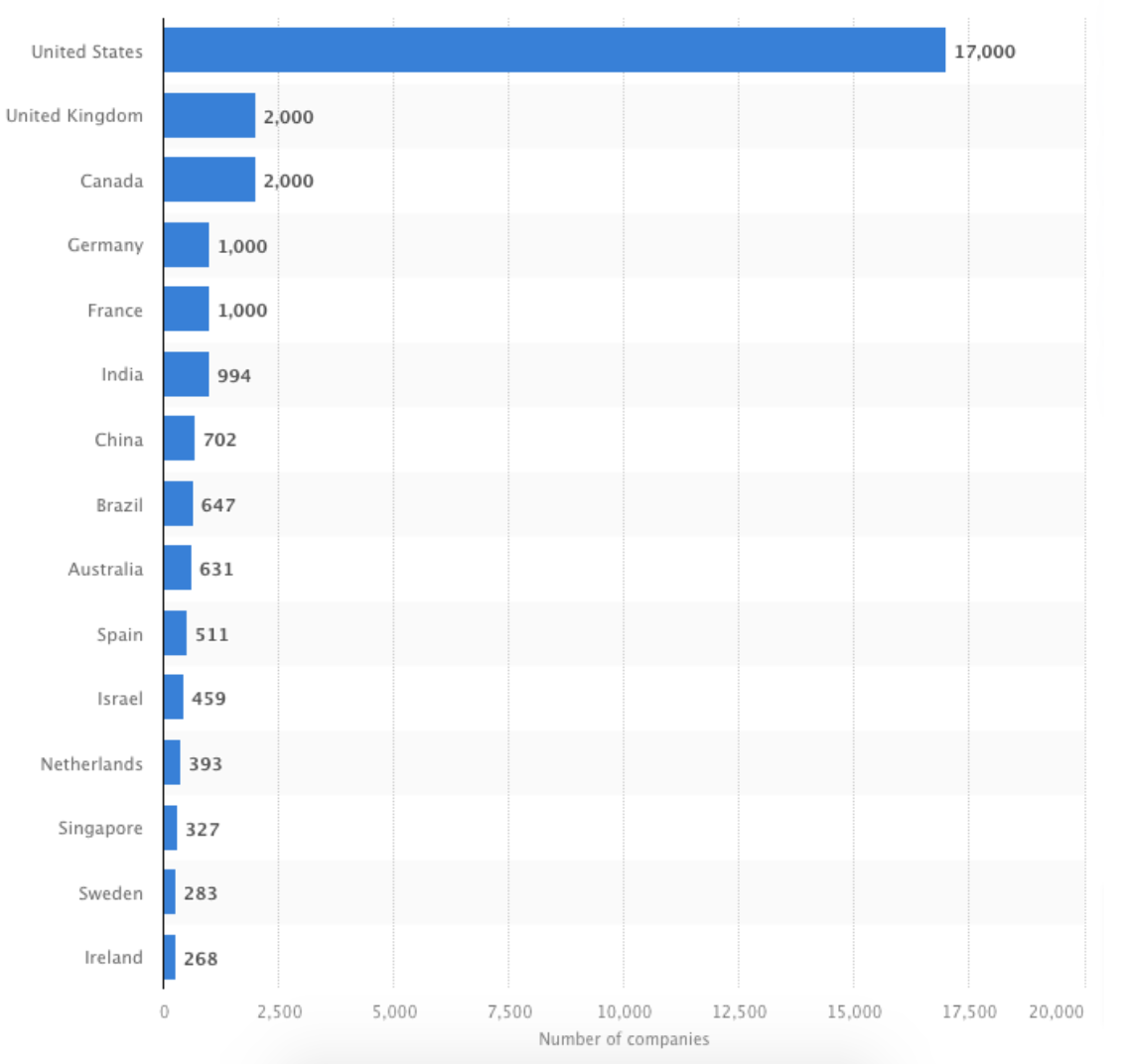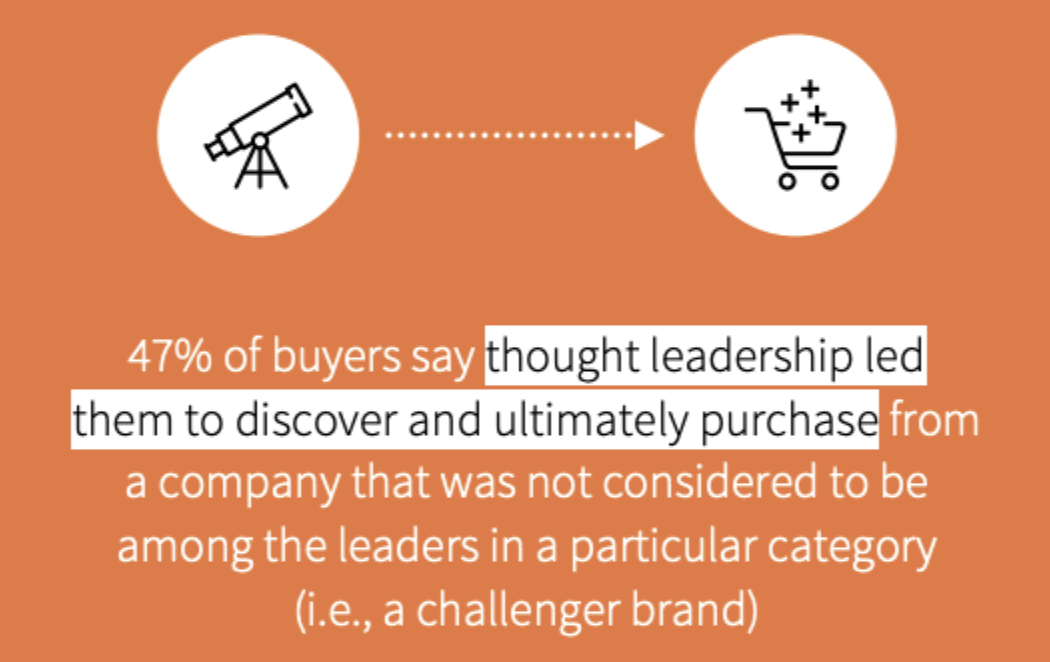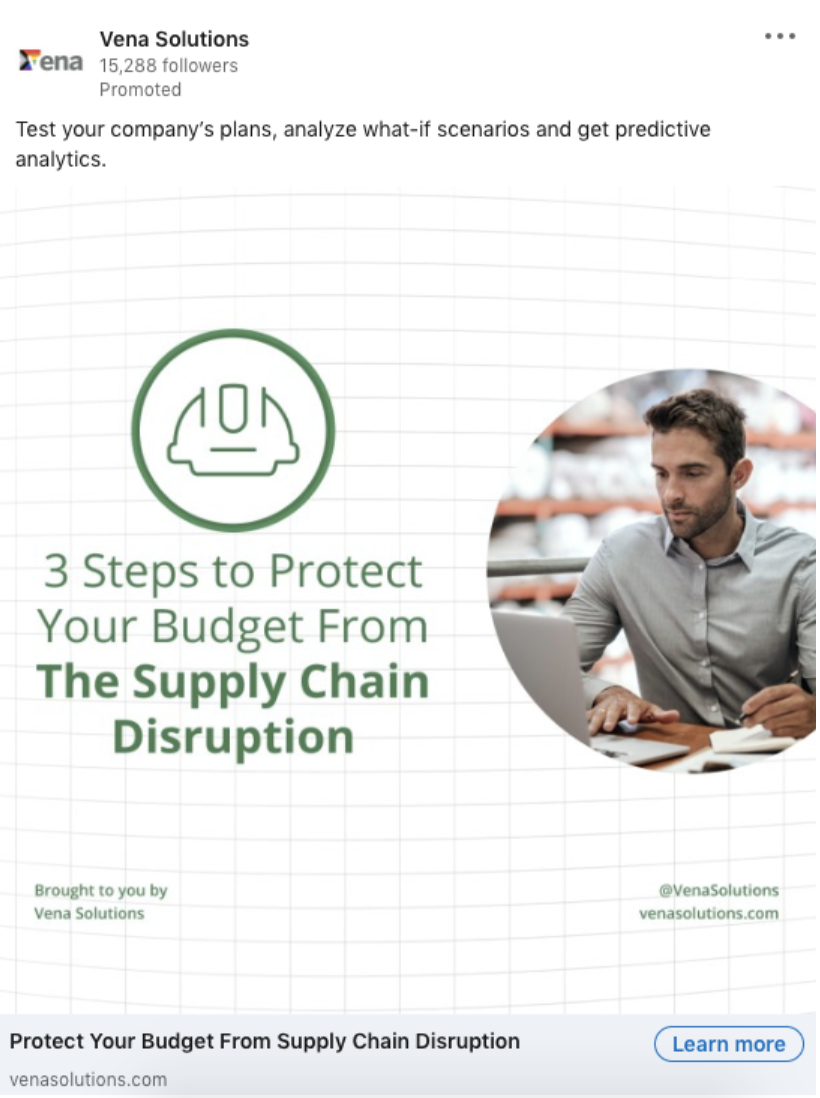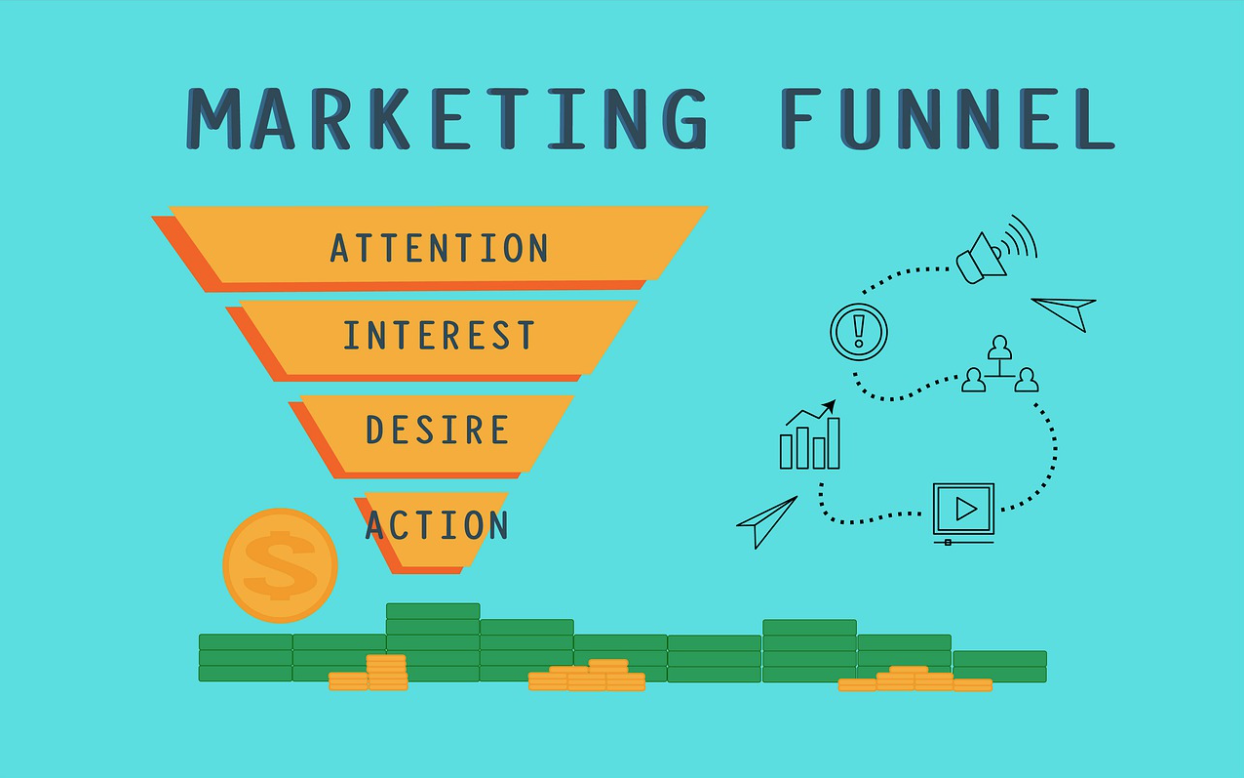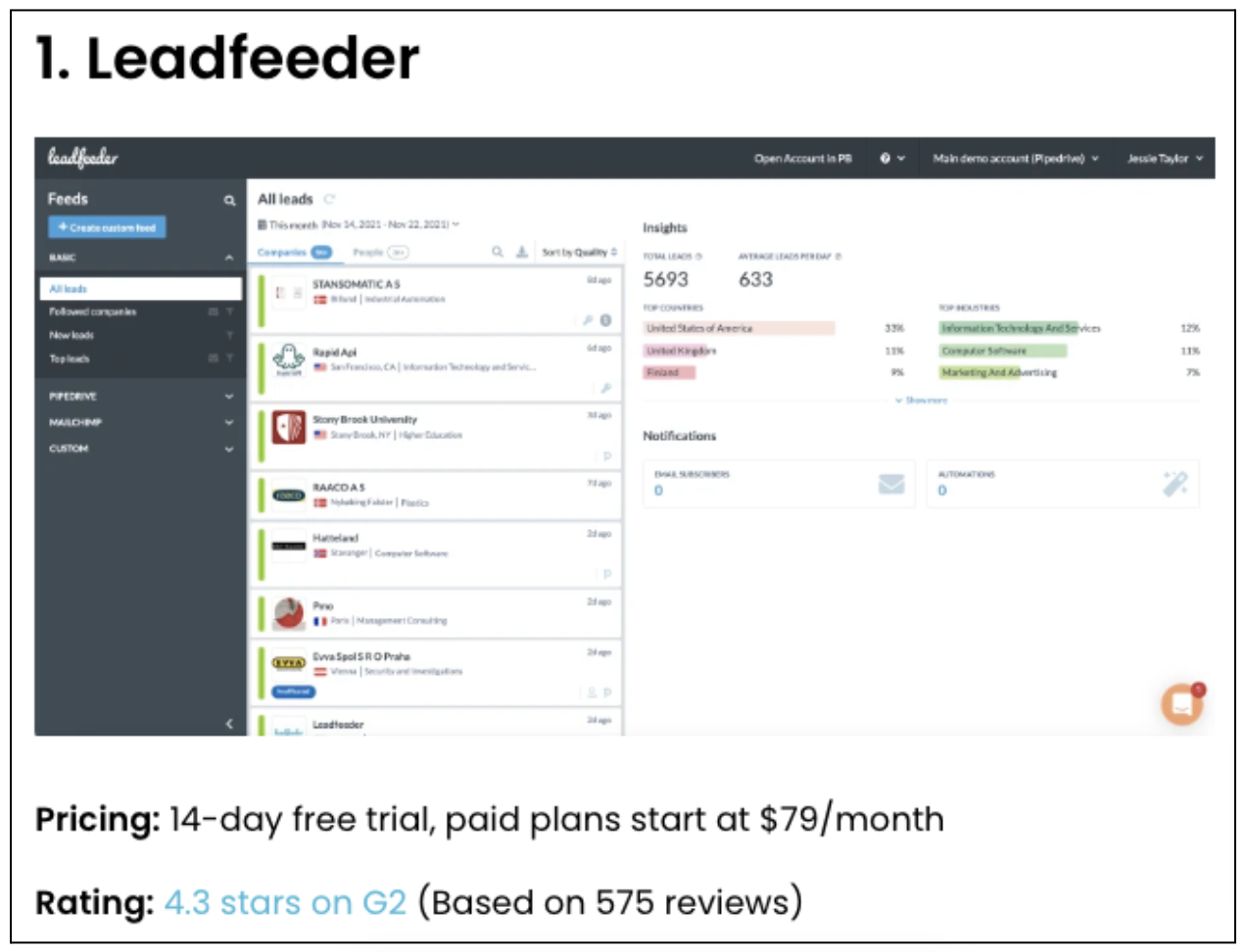You’ve got a fantastic SaaS product (or a brilliant idea for one). It’s got the potential to help a huge audience solve one of their biggest and most pressing business challenges.
But that’s still no guarantee of success.
The fact is, the SaaS market is competitive. Extremely competitive.
As of 2022, there are approximately 17,000 SaaS companies in the US alone, with thousands more across Europe and Asia.
If you don’t clearly explain your value proposition and differentiate yourself from your rivals, you’ll struggle to achieve your growth targets.
Fortunately, there’s a clear solution: content marketing for SaaS.
A smart content strategy spells out your USPs, communicates the value you provide, and establishes you as a thought leader in your niche — all key elements in convincing would-be customers that your product is the best fit for their needs.
With that in mind, in this article we’re going to set out three data-backed content marketing strategies for growing SaaS brands:
- Use thought leadership to disrupt established niches
- Target bottom-of-the-funnel keywords to drive demos, trials, and signups
- Communicate your value proposition through persona-based landing pages
3 Content Marketing Strategies for SaaS Companies
1. Use Thought Leadership to Disrupt Established Niches
Turning leads into paying customers is hard enough if you’re a household name with a well-established product.
But what if you’re not one of the big players? Or what if you’re preparing to enter a new niche? How do you disrupt the landscape and position your solution as a viable alternative to the incumbents?
Thought leadership can help.
According to Edelman’s 2021 B2B Thought Leadership Impact Study, almost half of buyers say that thought leadership content helped them to discover — and ultimately buy from — a brand that wasn’t considered to be among the market leaders in their niche.
Not only that, but:
- 60% of buyers say thought leadership builds credibility when entering a new category in which the brand is not already known
- 57% say thought leadership builds awareness for new or little-known brands
- 53% believe it’s important for new and small companies to produce thought leadership if they want buyers to consider them
In other words: thought leadership can be a great equalizer, helping to close the gap between lesser-known brands and the Goliaths of the SaaS world.
One company that’s clearly well aware of this is Vena Solutions.
As a corporate finance-based SaaS product, Vena Solutions is competing with huge, multinational companies like SAP and Workday.
To level the playing field, they regularly produce thought leadership content based on key audience pain points, such as their recent guide to protecting budgets from supply chain disruption.
Vena Solutions then uses LinkedIn advertising to promote their latest articles, helping Vena reach audiences that might not be familiar with their brand:
And, because content marketing — as with all forms of marketing — is ultimately about driving revenue, Vena incorporates prominent calls-to-action (CTAs) throughout their content to:
- Encourage readers to subscribe to their email marketing list
- Persuade readers to register for a product demo
Key Actions
- Come up with content themes based on your audience’s biggest pain points. If you don’t know them, survey your existing customers to understand what brought them to your product in the first place.
- Use those themes to create thought leadership content that offers practical solutions to the problems your audience is facing.
- Reach new audiences by promoting your thought leadership content on social media (LinkedIn is an obvious choice).
2. Target Bottom-of-the-Funnel Keywords to Drive Demos, Trials & Signups
You might have noticed that when we spoke about thought leadership in the previous point, we didn’t mention anything about SEO.
Quite the opposite: we noted how Vena uses paid social media advertising to get their thought leadership content in front of new audiences.
Now, let’s examine why.
Many SaaS marketers see content as an opportunity to cast the net as wide as possible. They do a bunch of keyword research; identify some juicy, high-volume search terms; and set about ranking for them.
“This term gets 20,000 searches a month, so if we break into the top three search positions, we’ll get a ton of traffic.”
But there’s a problem with this approach. Typically, those high-volume terms are at the very top of the marketing funnel.
Searchers at the “attention” stage have only just become aware of your existence. That means they’re a long way from buying. Most won’t have any immediate need for your product; many will never have a need for it.
That’s why we recommend focusing your SEO efforts on low-hanging fruit toward the bottom of the marketing funnel. Terms like…
- Best [product niche] software
- [Market-leading product] alternatives
- [Use case] software
…will inevitably have much lower search volumes. But because they’re far more intent-driven, these searchers are far more likely to request product demos, sign up for free trials, and become paying customers.
Let’s take the keyword “best inbound marketing tools” as an example. On average, it only attracts 30 searches a month in the US, so it’s super-low-volume. But the majority of people searching for it will likely be in the market for some kind of inbound marketing SaaS product.
Leadfeeder, a SaaS company offering B2B lead generation software, currently ranks at #3 for this term with a blog about the top inbound marketing tools:
As you probably guessed, Leadfeeder has listed their own product at the top of the list, along with details about their free trial, monthly pricing, and product reviews.
Key Actions
- Use a keyword research tool like Ubersuggest or Ahrefs to find bottom-of-the-funnel keywords in your niche
- Create content around those keywords and add prominent CTAs to compel visitors to take action
3. Communicate Your Value Proposition Through Persona-Based Landing Pages
Your value proposition is a clear, jargon-free reason why a customer should choose your product over other direct competitors (or alternative methods they’ve used to solve the same problem).
Your value prop needs to explain the problems you solve, the benefits you provide, and the reasons you’re better than the competition — and it needs to do all those things in a way that resonates with your ideal customers.
Obviously, you know your product. You think it’s the best thing since sliced bread. But explaining why it’s so brilliant is difficult.
Indeed, one study found that, on a scale of 1-6, the average SaaS marketer only awards their product marketing practices (incorporating things like value proposition, product roadmap, and competitive understanding) a score of 3.24, with 30% scoring their companies 1 or 2.
That’s not great.
In our experience, the most effective way to communicate your value proposition in a way that truly speaks to buyers is to build audience-specific landing pages dedicated to your various buyer personas.
After all, you might only have a single product, but it likely appeals to more than one type of buyer.
Take Encharge as an example. Encharge is a SaaS email marketing and automation company. That means they appeal to a broad range of potential customers, from marketing agencies and content creators, to subscription businesses and fellow SaaS brands.
For each of those segments, Encharge’s value proposition might look slightly (or totally) different. Content creators want a tool to grow and engage their audience, while SaaS companies are looking for ways to convert, onboard, and retain more customers.
Rather than trying to incorporate all those points on a single, generic landing page, Encharge has crafted industry-specific landing pages for each of their key audiences:
That way, each page can focus on the biggest pain points of that specific audience, while clearly explaining how Encharge’s product can help.
Key Actions
- Define your 3-5 biggest audience segments, either by industry, company size, or the goal they’re looking to achieve.
- Create dedicated landing pages for those segments, clearly communicating the specific benefits of your product in the context of each audience.
Content marketing for SaaS companies is tough. Don’t have the resources to do it all yourself? Content Conquered can help!
Get in touch with us today to see how we can help you communicate your value proposition, position yourself as a thought leader, and grow your business.

